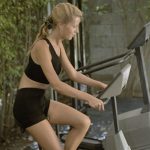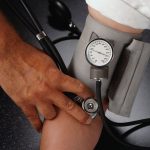
The exhaustion of a new baby can have negative fitness consequences as you lose the motivation to exercise and feel there’s no time to get to the gym. But not exercising actually worsens fatigue, makes it harder to lose your baby weight, and increases the risk of chronic health problems down the road. Don’t fret, though: There’s a popular way to turn the situation around — stroller walking. A small study published in the Journal of Women’s Health Physical Therapy tested the cardio benefits of walking at about 3 miles per hour while pushing a stroller, and found that it met guidelines for boosting cardio fitness. Another study quantified the metabolic advantages: The calorie burn is up to 18 percent higher at 3 miles per hour and up to 20 percent higher at 3.5 miles per hour than walking without a stroller. Of course, there are safety precautions to take for baby. A traditional 4-wheel stroller isn’t safe for jogging or even brisk walking because it lacks features that protect baby from shocks as you move quickly, especially over uneven surfaces and bumps in the road. Invest in a well-designed 3-wheel jogging stroller. And look for a lockable swivel for smooth surfaces and a fixed setting for rough surfaces. Jogging stroller features: Baby harness and safety tether. Large air-filled tires (check tire pressure often). Suspension… read on >



























-300x200.jpg)







-300x169.jpg)
